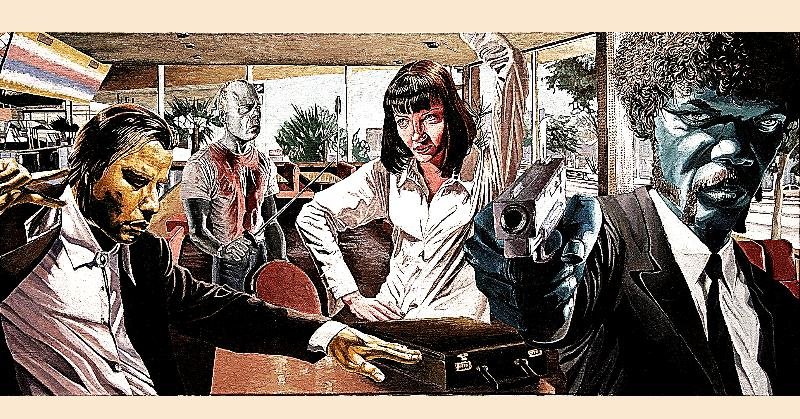Revisiting Pulp Fiction 30 years after its release in 1994. What is the main theme of Pulp Fiction? I think it is a movie about moral dilemmas.
Pulp Fiction 30 Years Later
I recently heard 1994 was the last year on Earth before the internet took over, and Pulp Fiction would not work in an era with social media, a 24/7 news cycle, and all that jazz. After premiering at Cannes in May, it was released in October 1994 and was groundbreaking for postmodern film and writing in general. The dialogue, self-referential nature, and plot structure are marvelous. The only real problematic aspect is its use of the N-word (And yes – Harvey Weinstein can burn in hell.) but I’m not touching any of that with a ten-foot pole. The dark humor and ultra-violence in this flick are reminiscent of A Clockwork Orange.
Growing up, I typically put Jackie Brown, Reservoir Dogs, and Kill Bill (1 & 2) at 1, 2, 3 for my top Tarantino films, probably because that was the hipster thing to do. (By the time Inglorious Basterds came out, I was too busy to be ranking films.) But after recently watching it again, it’s as much of a masterpiece as Reservoir Dogs. All I’ll be discussing here my perspective on the film’s core meaning. If you haven’t seen it, the following might not make much sense and there will be spoilers so thou be warned.
The film opens with a definition of “Pulp” and then cuts to the two restaurant robbers, including Tim Roth as “pumpkin,” who was a cop as Mr. Orange (like a pumpkin) in the last film. Also similar to Reservoir Dogs, it opens at a diner where the characters are presumably eating breakfast. This pair, which also includes Amanda Plummer as “honey bunny,” are crucial to main message which is about recognizing when “divine intervention” has occurred and then the choice to be a better person after.
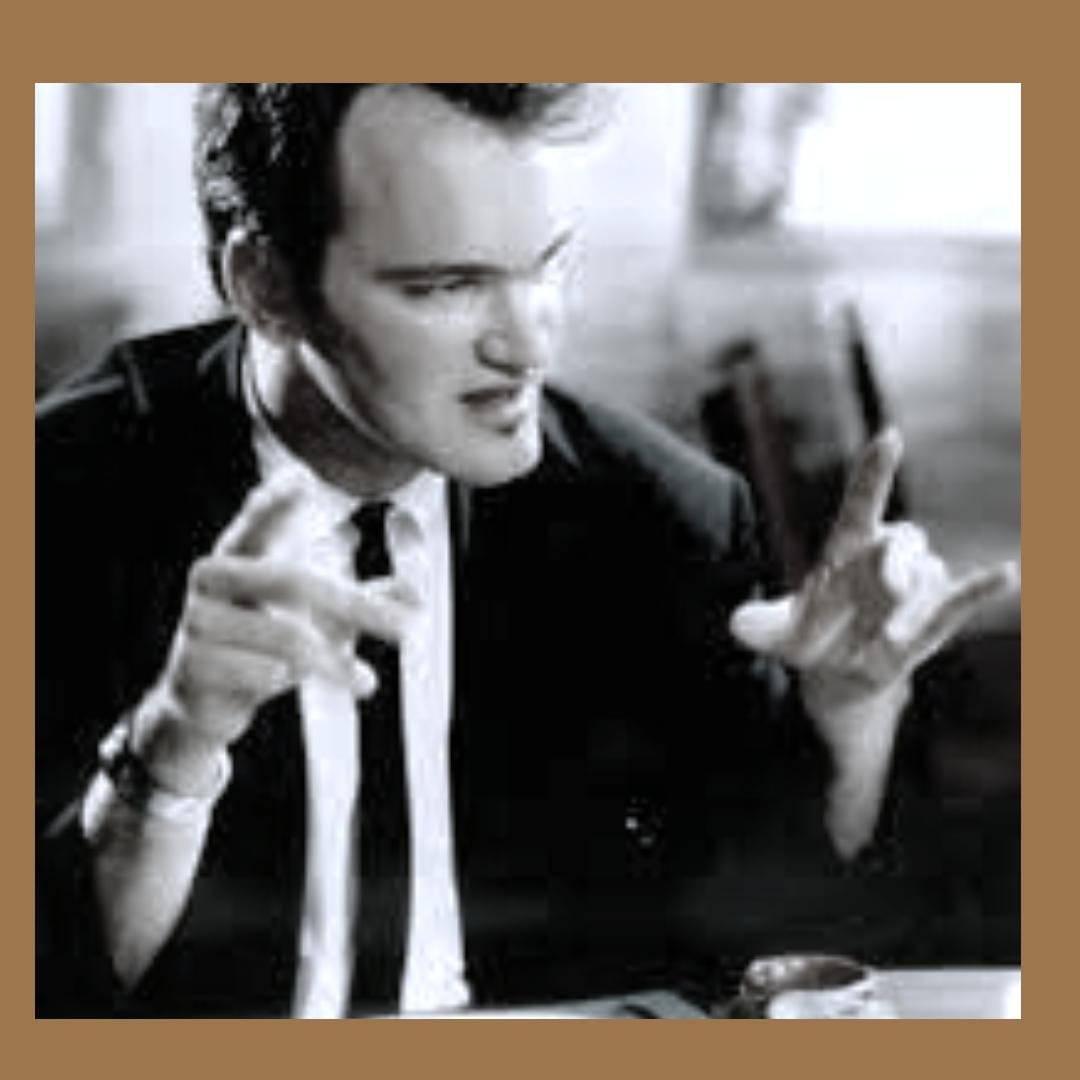
The whole “royale with cheese” scene is all set-up, leading to the plot’s cornerstone moment. We get information about Marsellus Wallce, his wife Mia, and Vincent Vega’s upcoming date with her. Afterwards, we are presented with the back of Mr. Wallace’s head as he explains to Butch that he shouldn’t let pride get in the way of money and informs the audience that Butch has a moral dilemma as well – should he go down in the fifth round or not? Vincent and Jules enter this scene with different clothes and the briefcase. Here, Butch and Vince have a face-to-face moment that ends up being brilliant foreshadowing.
Next we learn Vince is a heroin addict before the date with Mia. Here we get sneak preview of the Kill Bill plot, a cameo from Mr. Pink (Steve Buscemi), and a cool dance scene. Vince deliberates the moral quandary before him in the bathroom, the audience knows at this point that Mr. Wallace is not a person to mess with but also that Vince is hitting it off with Mia. Merely debating the moral dilemma is almost his downfall as he returns to find Mrs. Wallace overdosing and she barely survives, but only because Vince stabs her in the heart.
Now for Bruce Willis as Butch and the film’s second act, opening with a brilliant monologue by the great Christopher Walken. This scene establishes why the gold watch is so important to Butch, the crux of this middle part. The next scene is probably the weakest of the film with Butch and Esmerelda but we learn the main character did not go down in the fifth as he was supposed to, killed the other fighter, and doesn’t feel bad about it.
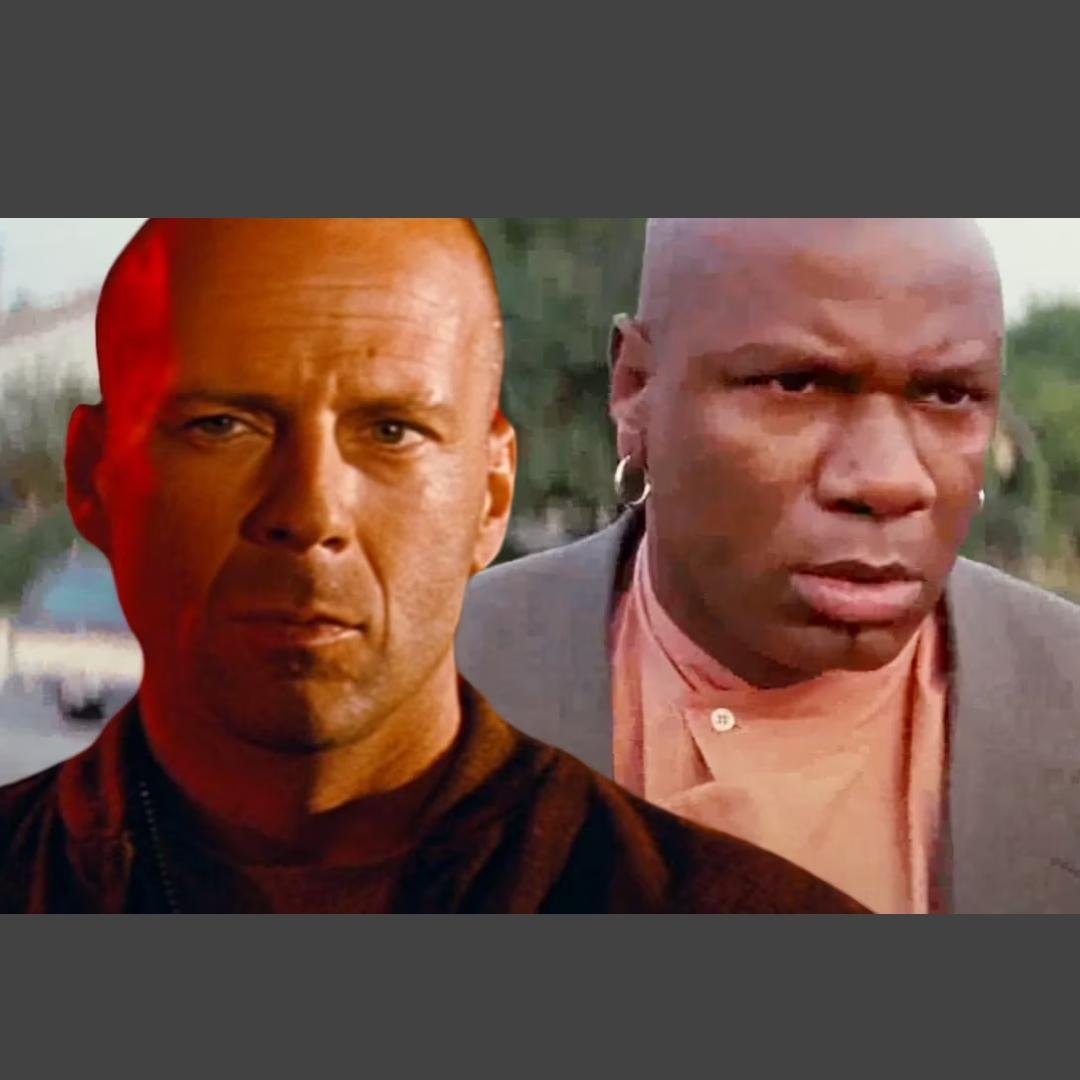
Also, John Travolta as Vince makes a small appearance without Sam Jackson as Jules, which will be important further along, and that Marsellus Wallace (played by Ving Rhames) is on the hunt for Butch. This is also the second-to-last time we see Uma Thurman as Mia on screen.
The Portuguese actress Maria de Medeiros plays Fabienne, Butch’s significant other who forgets to pack the gold watch. After a scene at a payphone where it is revealed Bruce Willis will be “rich and prosperous” once he gets out of LA to Knoxville, TN, there’s a good time spent with the characters Fabienne and Butch. The morning following the fight, we learn she forgot the watch. Butch gets mad and throws things, but does not hurt his lover, who gives an insanely sincere apology.
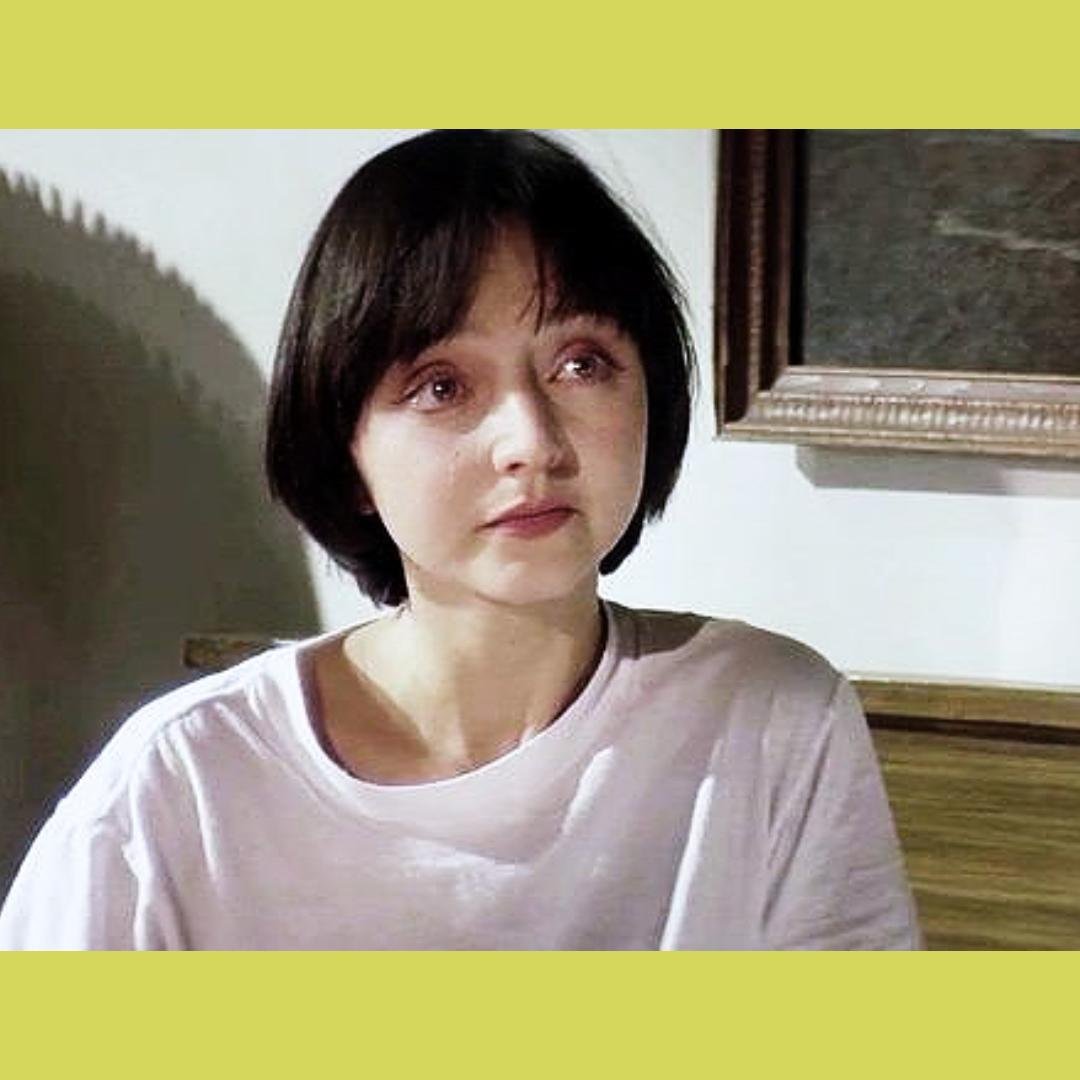
The next barrage of events hold the core of the film’s message, in my opinion. First, Butch gets the watch and kills Vincent Vega. Next, Butch claims that is how he’s going to win – because he has been “underestimated.” What looks like a happy ending crumbles when the audience sees Marsellus Wallace’s face for the first time in the film. Bruce Willis hit him with a car, people are shot, and the two men end up a couple of “flies” in a spiderweb pawnshop. When Butch escapes, though, he is presented with yet another moral quandary in which it seems he does the right thing. He saves Marsellus despite that just a few hours ago, the man wanted him dead. Things get resolved and Butch gets away with Fabienne. “Zed’s dead.”
And while in my past I always found the third act underwhelming, it really is the meat of the whole meal. We learn that the “cornerstone” scene revolves around what Jules calls “divine intervention.” His decision to “walk the Earth” is what saves him, he took the incident as a calling to change his life for the better. Vincent, on the hand, doesn’t and this costs him his life. A choice must be made, being neutral is not an option. We know this because Marvin “doesn’t even have an opinion” on the matter and is immediately stricken by fate. The whole part with the Wolf (Mr. White, Harvey Keitel) and Tarantino’s whiny performance (Mr. Brown) is superfluous but illustrates that there is one domesticated world present in the film and another crime-ridden world that the film spends most of its time in. Marsellus and Mia also have their final scene in the movie when Jules gives Mr. Wallace a call.
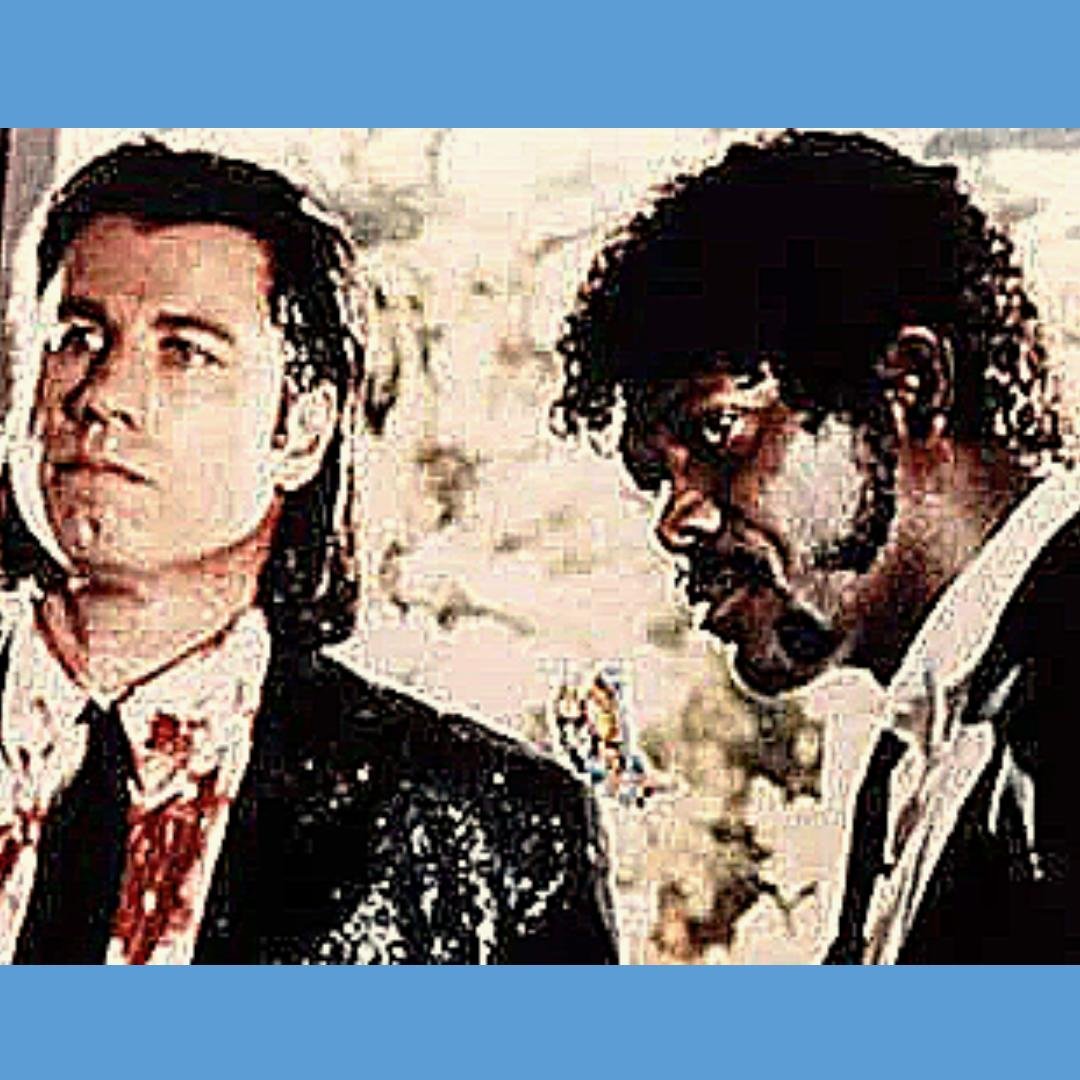
And finally, we arrive at the diner in which we began. The message of the movie is clearly stated by Jules, to recognize an act of god as a message to correct one’s own moral compass. Then honey bunny and pumpkin re-enter the movie and encounter their very own divine intervention, Samuel Jackson states this when noting that he is not killing them because of the events that transpired earlier that morning. He lets them live. We do not know whether Honey Bunny and Pumpkin will choose to correct their lives after facing a divine intervention. This is why some speculate that what is in the briefcase is the human soul or a representation of the divine in physical form.
So 30 years later, the film holds up. I have a much higher regard for the movie than when I was younger. Jackie Brown is great because of its subtlety, but I may need to rewatch it to see if I still think it’s better than Pulp Fiction 30 years later.
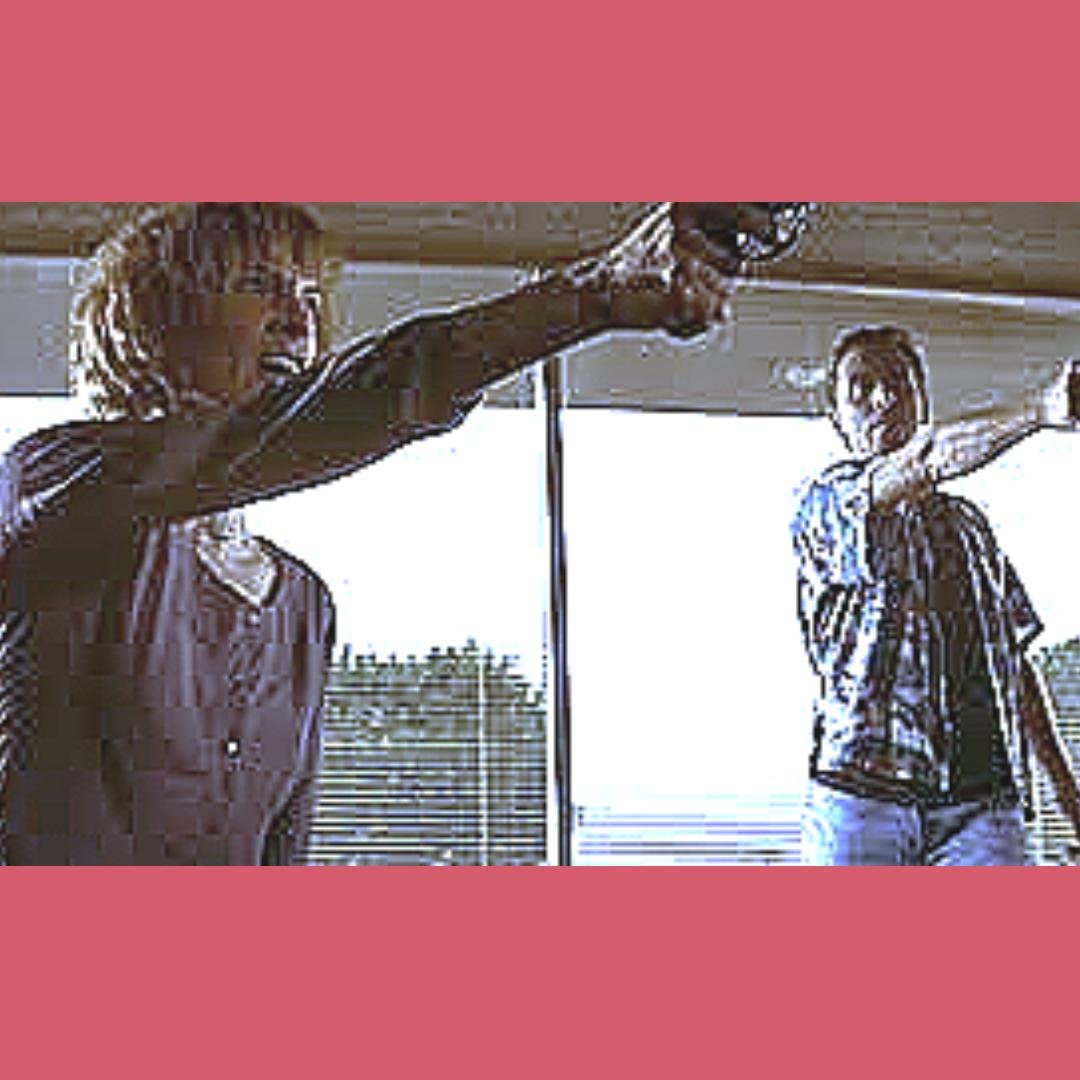
© 2024 –
"Pulp Fiction 30 Years Later," written by BW Derge
